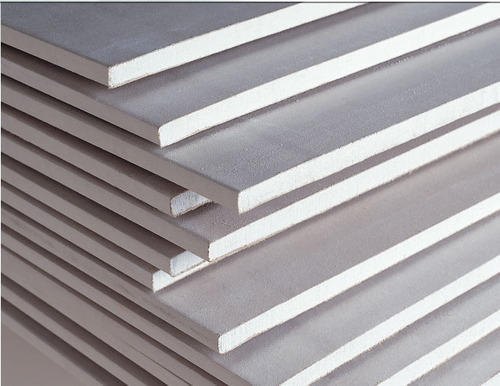Project Report For Gypsum Board Manufacturing
Introduction
Project report for Gypsum Board Manufacturing is as follows.
Gypsum board (also known as plasterboard, wallboard, gypsum panel, sheetrock, or Drywall) is a panel made of calcium sulphate dihydrate (gypsum) squeezed between a facer and a backer with or without additives (typically thick sheets of paper). Interior walls and ceilings are built using this material.
The plaster is composed up of fiber (typically paper and/or fiberglass), a plasticizer, a foaming agent, and a number of compounds that aid to prevent mildew, increase fire resistance, and limit water absorption.
Project Report Sample On Gypsum
Board Manufacturing
Get Completely Custom Bankable Project Report
Gypsum building materials are used in all types of construction (residential, non-residential, new or restored) and vary from complex high-tech systems to easy to install everyday items.
Gypsum board is widely used in the construction industry for interior walls and ceilings, and it is growing in popularity among DIYers.
Gypsum board is a common fire barrier in addition to the house and general building construction. Gypsum boards are used in a variety of applications, including walls and ceilings, wet areas, outdoor applications, fire resistance, and area separation, among others.

Gypsum board is a common fire barrier in addition to the house and general building construction. Gypsum boards are used in a variety of applications, including walls and ceilings, wet areas, outdoor applications, fire resistance, and area separation, among others.
Gypsum plaster board (GPB), sometimes known as gypboard, is a light-weight, low-cost construction material made from aerated gypsum plaster. It comes in a range of thicknesses to suit a number of applications.
Gypsum is an important component in the manufacture of cement. Gypsum consumption varies depending on the clinker quality, ranging from 2% to 6% at different plants. In India, natural gypsum deposits abound, with the bulk of them being found in Rajasthan, Gujarat, and Tamil Nadu.
A number of chemical firms also receive gypsum as a byproduct in the form of phospho gypsum. Chemical gypsum may be used to replace natural gypsum entirely or partially. Many cement manufacturers that are adjacent to phosphogypsum deposits employ this substitute product.
Market Potential Of Gypsum Board Manufacturing
Expenses

Product Cost Breakup

Reveneue Vs Expenses

Market Trend

The worldwide gypsum board market was worth USD 45.08 billion in 2020 and is predicted to expand at an 11.8 percent compound annual growth rate (CAGR) between 2021 and 2028. The residential building sector’s growing demand, along with rising consumer expenditure on sophisticated construction materials, is likely to fuel product demand.
The rapidly expanding construction sector in key markets such as China, India, Brazil, Mexico, South Africa, and Russia is likely to fuel market expansion. Additionally, the expanding spectrum of novel applications in the construction industry is expected to drive up product demand.
In the United States, the market was worth USD 13.57 billion in 2020 and is expected to expand at a healthy CAGR during the projected period.
Over the projected period, the developing construction sector and rising demand for single-family and multi-family home constructions in the nation are expected to boost product demand.
The growing trend for aesthetic enhancements in building structures, facilitated by the product’s capacity to include novel shapes and textures on its surface, is projected to accelerate the product’s penetration into high-end construction applications.
Wallboards and ceiling boards, for example, are often utilised to improve the interior design of residential and commercial buildings. Increased urban migration in developed countries, increased government investment in a residential buildings, and rising demand for high-end residential dwellings are expected to support market expansion. However, price variations in raw materials and stringent restrictions governing gypsum mining may restrain market expansion.
